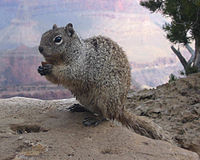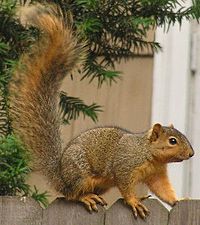
Flying squirrels are a tribe of 50 species of squirrels in the family Sciuridae. Despite their name, they are not in fact capable of full flight in the same way as birds or bats, but they are able to glide from one tree to another with the aid of a patagium, a furred skin membrane that stretches from wrist to ankle. Their long tails also provide stability as they glide. Anatomically they are very similar to other squirrels with a number of adaptations to suit their lifestyle; their limb bones are longer and their hand bones, foot bones, and distal vertebrae are shorter. Flying squirrels are able to steer and exert control over their glide path with their limbs and tail.

Sciurinae is a subfamily of squirrels, uniting the flying squirrels with certain related tree squirrels. Older sources place the flying squirrels in a separate subfamily (Pteromyinae) and unite all remaining sciurids into the subfamily Sciurinae, but this has been strongly refuted by genetic studies.
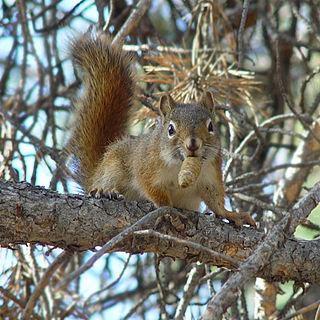
Pine squirrels are squirrels of the genus Tamiasciurus, in the Sciurini tribe, of the large family Sciuridae.

The Mentawai Islands rain forests is a tropical moist broadleaf forest ecoregion in Indonesia. It covers the Mentawai Islands, an archipelago in the Indian Ocean off the west coast of Sumatra. The islands have been separated from Sumatra since the mid-Pleistocene period, and their geographic isolation allowed the evolution of several endemic species, including 17 endemic mammals.

The groove-toothed flying squirrel or North Chinese flying squirrel is a species of rodent in the family Sciuridae. It is considered monotypic within the genus Aeretes. It is endemic to China, and occurs in Sichuan, Gansu, Hebei, and Beijing. Its natural habitat is temperate forests.

The particolored flying squirrel is a species of rodent in the family Sciuridae. It is found in Bangladesh, Bhutan, Cambodia, China, India, Laos, Myanmar, Nepal, Thailand, and Vietnam. Its natural habitat is subtropical or tropical dry forests. It is threatened by habitat loss.
The Afghan flying squirrel is a subspecies of rodent in the family Sciuridae. It is endemic to Afghanistan.
The Bartel's flying squirrel is a rodent species in the family Sciuridae endemic to West Java, Indonesia. It inhabits subtropical and tropical forest.
The Sipora flying squirrel is a species of rodent in the family Sciuridae. It is endemic to Indonesia. Its natural habitat is subtropical or tropical dry forests. It is threatened by habitat loss.

Iomys is a small genus of rodent in the family Sciuridae. Its two species are:

Petaurista is a genus of rodent in the family Sciuridae. They are large to very large flying squirrels found in forests and other wooded habitats in southern and eastern Asia.
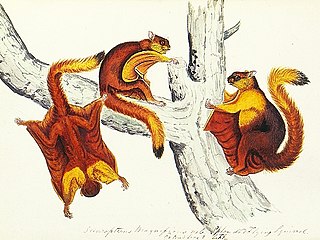
Hodgson's giant flying squirrel is a species of rodent in the family Sciuridae. This large flying squirrel lives in Himalayan forests in Asia. Like other flying squirrels, it is nocturnal and able to glide long distances between trees by spreading out its patagium, skin between its limbs.
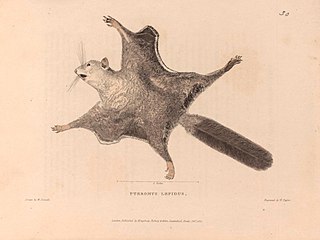
The arrow flying squirrel is a species of flying squirrel. It is endemic to Java and Bangka, Indonesia. The population is unknown as it has only been collected from a few localities. It is nocturnal and arboreal and may be found in primary and secondary forest. It is threatened by forest loss due to logging and agriculture and there are no known conservation actions.
Vordermann's flying squirrel is a species of rodent in the family Sciuridae. It is found in Indonesia, Malaysia, and Myanmar. It was described in 1890 by the Dutch zoologist Fredericus Anna Jentink, who named it after its discoverer, the Dutch physician Adolphe Vorderman.

The Jentink’s flying squirrel is a species of squirrel native to Indonesia and Malaysia. They are nocturnal omnivores, and have an average body length of 131.27 mm and an average body mass of 56.98 grams.













